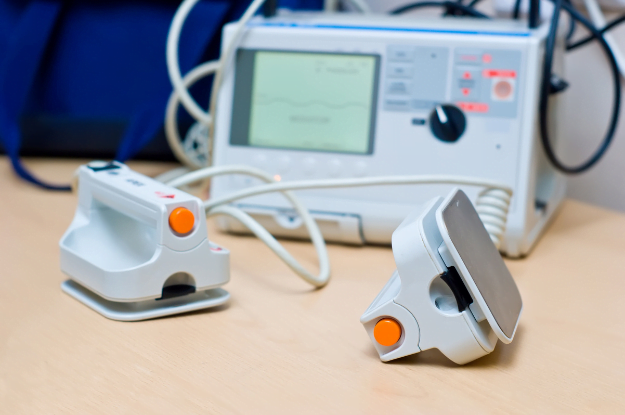You may have seen a red box with a heart sign and lightning bolt when running errands in the malls or the gym. That equipment is an automated external defibrillator, an important device that saves thousands of lives globally. There is a zoll defibrillator for sale and you can take advantage and order one from various retailers and help save lives.
Many people suffer cardiac arrests outside hospitals, and few survive. AEDs help people with cardiac arrest, and their function is not limited to health facilities; you can use them at schools, homes, or any other public place. If you want these small devices, you can purchase them without a prescription.
You should have an AED at home when you have a complex heart condition and are at substantial risk of cardiac arrest. Although these portable life-saving tools can help resuscitate people, it only works with people with irregular heart rhythms.
How Do AEDs Work?
The automated external defibrillator delivers electric current to a person with a cardiac arrest to restore their heart rhythm to normal. They are easy to use, but you can get training in first aid classes.
When a person faints, you must follow these tips when using an AED.
- Check if that person has a pulse and they are breathing.
- If the patient is not breathing, call for emergency help, and if you’re more than one person, let the other call 911 as you prepare the AED.
- Switch on the AED, and the device will give you clear spoken instructions. Follow them step-by-step; it will direct you on how to check the victim’s pulse and breathing. Position the electrode pads on the bare chest of the patient.
- After putting the pads on that person’s chest, the AED will measure their heart rhythm and deliver the shock if needed. The machine will also instruct you on whether you need to deliver a shock or not. If the shock is required, the AED will provide the shock.
- After delivering the shock, perform CPR because it is needed. The device will also guide you on how to do CPR.
- You can repeat the process if it’s needed until the emergency team arrives.
If you purchase an AED device for home use, remember how to use it; it comes with service guidelines and maintenance instructions.
When not to use an Automated External Defibrillator
There are some instances when you’re not supposed to use an AED. They include:
When a person is conscious and breathing normally
The AED should be strictly used when someone is unresponsive and is not breathing normally. But you should remember that in some cases of cardiac arrest, someone may demonstrate agonal breathing for a few seconds or even minutes.
Make sure you don’t mistake agonal breathing for normal breathing. In agonal breathing, someone experiences shallow half-breaths, gasping, snorting, or moaning. When a person has agonal breathing, you must use AED. To learn about embracing technology in long-distance medical transportation, click here
When someone has a Do Not Resuscitate (DNR) Sign
If you find someone with a DNR tattoo or bracelet, do not use the AED on them. The DNR signs mean the victim doesn’t want resuscitation; respecting their wishes is advised.
When your AED has Faulty Parts
If this tool has broken or faulty parts, it may not function properly. If you have a non-functional AED, you’re advised to search for another nearby.
Is an automated external defibrillator essential for your home?
There are people with higher risks of getting cardiac arrest; purchasing an automated external defibrillator will give them peace and help them save lives.
Check out the things you should consider when buying an AED.
- Avoid death caused by cardiac arrest – if you’re at high risk of cardiac arrest, get an AED to avoid cardiac death. Consult your doctor; they may recommend an AED OR implantable cardio defibrillator (ICD). The ICD is implanted in your chest and connected to your heart through a wire, providing a shock whenever needed.
- AEDs are costly – these tools are expensive and not covered by insurance.
- Living arrangements – You need another person to use AED during cardiac arrest. The person attending you must be able to kneel on the floor, use the tool, and get up. The AED may be useless if you live alone or with someone who can’t get on the floor and up.
An AED is an essential device in saving lives, and if more places had these life-saving tools, there wouldn’t be so many cardiac deaths. It’s easy to use and comes with voice prompts, offering much-needed guidance. However, if you live alone or with an elderly or sick person, the gadget cannot be so helpful since someone else has to use it on you.




